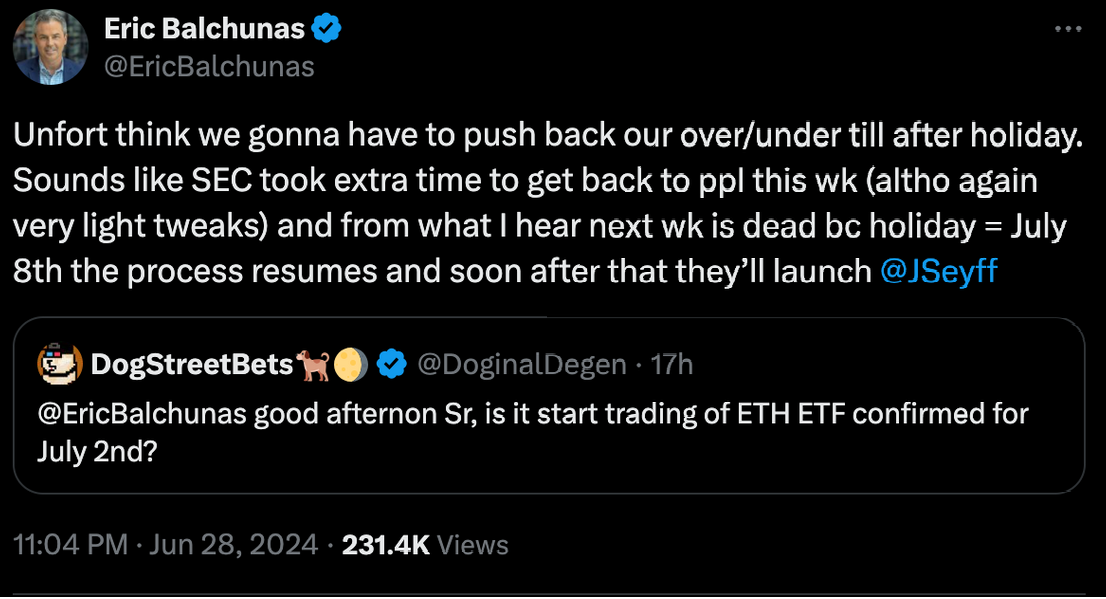SEC requests revisions on spot Ethereum ETF, delays launch
According to Bloomberg ETF analysts Eric Balchunas and James Seyffart, the SEC has taken extra time to return the S-1 forms, pushing the launch to mid-July or later
The U.S. Securities and Exchange Commission (SEC) has requested revisions on the S-1 forms for the much-anticipated spot Ethereum exchange-traded funds (ETFs). This decision has caused a delay in the launch, which was expected to happen on July 2.
Potential Ethereum spot ETF issuers need to address the SEC’s comments and resubmit the forms by July 8. This process indicates that at least one more round of filings is required before the ETFs can begin trading.
According to Bloomberg ETF analysts Eric Balchunas and James Seyffart, the SEC has taken extra time to return the S-1 forms, pushing the launch to mid-July or later.
ETF Store president Nate Geraci mentioned that the last round of S-1 revisions was relatively minor, predicting that the SEC would clear issuers for trading within 14–21 days.
However, the exact timeline remains uncertain. The SEC has indicated a potential launch this summer, but specifics are still unclear.
The S-1 forms are part of a two-step process for the ETFs to go live. The first step involved the approval of the issuers’ 19b-4 forms in May, which was done ahead of a key deadline.
The S-1 forms, however, are not bound by any specific deadline. The speed at which the SEC processes these forms depends on how quickly they can turn them around.
SEC Chair Gary Gensler previously mentioned that the Ethereum ETF approvals could take place “sometime over the course of this summer” but did not provide a clearer timeline.
He did say that the approval process is “going smoothly.” This smooth process involves major issuers like BlackRock, Fidelity, 21Shares, Grayscale, Franklin Templeton, VanEck, iShares, and Invesco.
Additionally, issuers such as VanEck have filed 8-A forms, preparing for listing on exchanges by July 8. Gensler emphasized that the Ether ETF listings depend entirely on the applicants’ response times.






